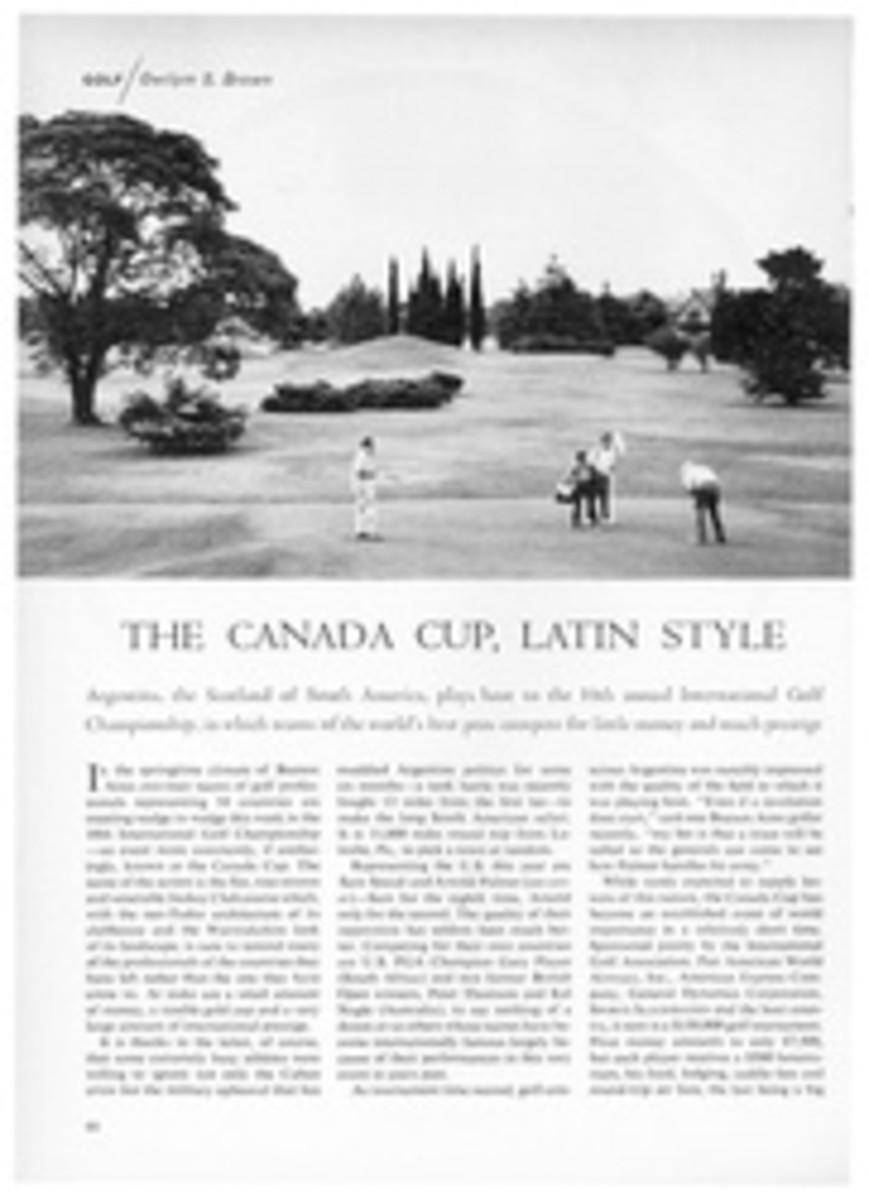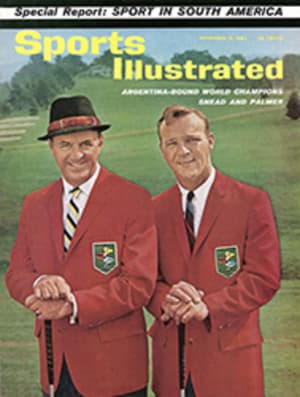
THE PLEASURES OF SUMMER IN SOUTH AMERICA
The calendar reads November everywhere on earth, but in South America November marks the beginning of the summer season out of doors—not a shuttering-up for winter. In Buenos Aires jacaranda trees shower the bridle paths of Palermo Park with purple blossoms; asado vendors roast great sides of beef over open pits beside the River Plate. It is calving time on the Argentine pampas, and swarms of yellow butterflies flutter above ripening wheat. At the popular seaside resorts of Vi√±a del Mar on the Pacific and Mar del Plata on the Atlantic, summer's first bathers flaunt summer's first suntans under the crystal chandeliers of the world's largest casinos. The game dorado has spawned and lies full of fight in the rivers of Uruguay and Paraguay. The Amazon flows, enriched by the melted snows of the high Cordillerras and the spring rains of the tropical lowlands, 3,900 miles to the sea. River steamers paddle between the modern port of Belém and the 19th century rubber capital of Manaus through the heart of the Brazilian rain forest, passing between walls of lianas strung with orchids and filled with shrill monkeys and jungle birds in bright mating feather. It is the season for hunting the lean, tawny jaguar, the fierce black buffalo. In Surinam, formerly Dutch Guiana, to the north on the Caribbean, early-arriving blue-winged teal, fat from the harvest fields of Saskatchewan or Nebraska, settle on the marshes of the Maroni River.
In Peru, in Ecuador, in Colombia and Venezuela, fiesta follows fiesta. Whether honoring a coffee queen or a saint, in this corner of South America where Spaniard first met Inca a fiesta is not a proper fiesta without the best bulls from Mexico and the best matadors from Spain. When Antonio Ordó√±ez fights in Lima next week, a true lime√±o, it is said, would hock his mistress, if need be, for a barrera seat in the shade. December's "Fiesta on the Equator," a bullfight fair honoring Jes√∫s el Gran Poder, begins with a running of the bulls, Pamplona fashion, through Quito's flower-decked streets. In Quito, 9,200 feet above the equator, there is perpetual spring—South American seasons are determined by altitude as much as by latitude. Down on the Peruvian coast, swordfish and sailfish, tuna and marlin—black or striped or blue—ride the cool north-flowing Humboldt Current. At their own Waikiki, Peruvian surfers ride the Pacific's long rolling waves, the equal of the best at Makaha. Down the narrow land of Chile, 2,000 miles to the south, the season is open on some of the world's best trout fishing in a string of lakes nestled at the foot of the Andes.
Until now South Americans have had this vast cornucopia of summer riches principally to themselves. To that most peripatetic of voyagers, the U.S. tourist, a familiar figure in the most out-of-the-way parts of the world, South America has remained as mysterious and as remote as the far side of the moon. Of the 1.5 million U.S. citizens who traveled overseas last year, only 177,000 visited South America. The main reason for this poor showing is lack of knowledge: only two countries, Colombia and Surinam, have any sort of tourist information bureau within the U.S. (South America's highly publicized neighbors in the Caribbean have flourished mightily from the more than half a million U.S. spenders who now visit them annually.)
The resistance to travel in South America caused by ignorance of its attractions is compounded by an uncertainty as to the kind of welcome the casual norteamericano may receive from latinos. Most people remember that they stoned Richard Nixon in Caracas, and there is a too-general impression that revolutions are always as imminent as earthquakes. The truth of the matter is that a private U.S. citizen in any South American country is welcomed with unusual politeness and friendliness. In the summertime, when the streets are full of corner cavaliers practicing the art of the piropo—an extravagant verbal appreciation of a lady passerby's charms—some visitors may find the natives too friendly. "Do you dare to look with those eyes?" a classic piropo goes. "You will burn your lashes!" In Lima last week an attractive blonde from Texas complained to a policeman that a man had just insulted her—he had said that she looked like a queen in tights. "But, se√±orita," said the policeman with admiration, "you do look like a queen in tights."
The official government attitude toward the United States is more formal but no less cordial. The Cuban crisis shook down the hemisphere's fence-sitters, and all the members of the Organization of American States—which includes every country in South America—backed President Kennedy's stand. While there still is heard an occasional cry of "Yanqui go home" as an ink bottle splatters on a U.S. Embassy building, such disturbances are the work of isolated leftist groups and represent no menace to the private traveler.
The jets have halved the time it takes to reach South America, and the fare is the cheapest, mile for mile, in travel. Even the sleepiest countries are opening their eyes to that U.S. tourist dollar—the $2.6 billion spent abroad in 1961 strengthened many shaky economies. Panagra reports an increase in passenger traffic this year of 17% over 1961 and predicts a doubling of traffic by next year. The steamship lines have 81 sailings scheduled during the current cruise season—Grace Line, which is adding three new ships in 1963, is increasing its passenger capacity 25%. This could be the summer that South America's ma√±ana becomes today.
MAP
JOHN ALCORN
Turn the page for drawings of primitive South American sports, still played today. This is followed by a 12-page portfolio of photographs of a South American summer. And, on page 60, by a traveler's guide to the best hotels, the fascinating food, shopping and sport. The Canada Cup matches, being played in Buenos Aires this week, are previewed on page 66. And, as a bonus, Richard Llewellyn sings the saga, of el gaucho on page 86.

